Lothar Weidinger converted the rare AKA-60 to a MCCR rebreather
Lothar Weidinger has made several contributions by showing his homebuild rebreathers on my website. His latest creation is the conversion of a rare Russian half-closed rebreather to a hand-operated constant mass flow rebreather. Here are the pictures:
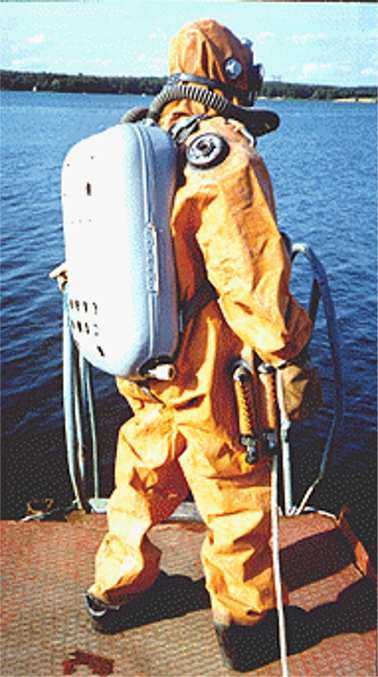
This picture shows the original AKA 60 Russian Semiclosed rebreather.
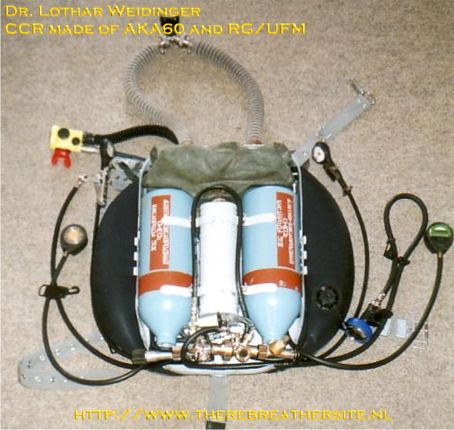
Here you see the RG/UF-M CMR valve mounted between the cylinders
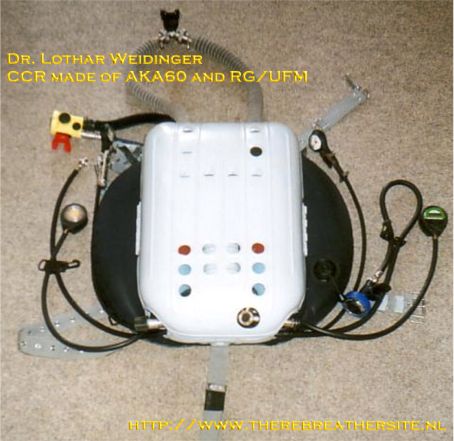
Oxygenpressure is montored by an Oxygauge (green instrument on the right)
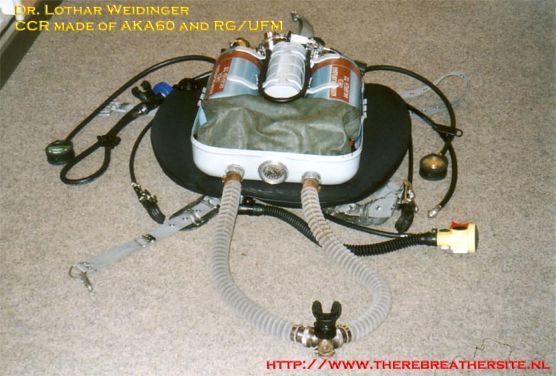
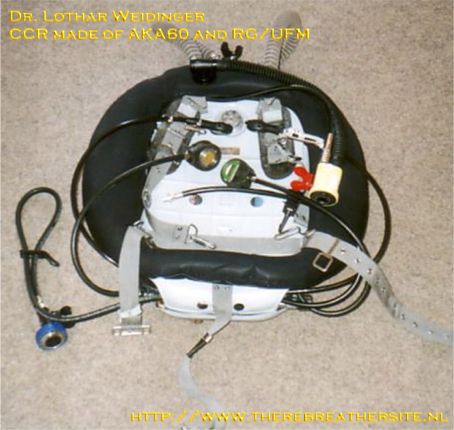
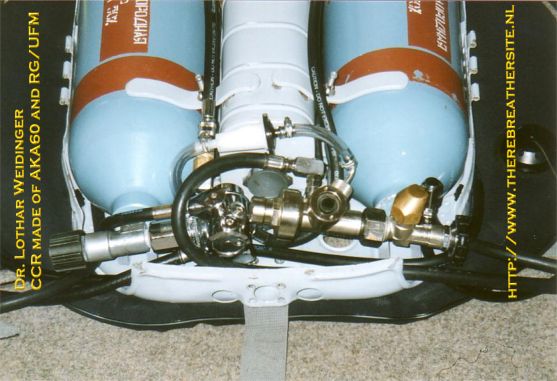
I asked Lothar to inform us about his backgrounds, here is his response:
First, excuse me for my poor English! I am a recreational diver. I like to see nature under water and to dive in very clear water.
I dive mostly depths between 20 and 30 m. So I don’t use side bottles or stages for decompression- or bailout-gases or argon-inflation.
The RG-Regulator has a pressure between 7 and 9 bar. You can use the system up to 40 m. For deeper dives you have often to add manual oxygen.
Function is the same like a KISS-oxygen-injection system, but little more compact.
OC-diving I began in 1986. My beginning in rebreather-diving was in 2001. At first I used the original RG-UF/M, than I built from the unit a Nitrox CCR with back worn diluent gas and BC and chest worn RG-UF/M. I think you know the old pictures I sent to you from the unit.
Last year I began (more safer) SCR-diving with a Dräger FGT. I did a course on the unit and bought one. Today I like SCR-diving and the easy handling of the FGT.
But CCR-Diving is lot more better and more fascinating. Dive without any noise and bubbles.
When I began diving the FGT, I built from an IDA 71 my second Nitrox CCR (modificated Franken-rig by Dave Sutton). The first IDA was the green one you know from the pictures. It is on already on your site. Half year later I changed the system to 2 l Oxygen and 2 l diluent. I added a wing and the system works great. BUT:
IDA 71 has in my mind some problems with too much no needed hoses in the counterlung. Not easy to clean and dry the parts in short time.Second problem is low gas budget of the diluent/bailout/BC-cylinder. 2 liter is to small for some more bailout-safety. I often do longer dives between 90 and 120 min.The lost of gas for BC and Drysuit inflation is too much. So I changed to the rare AKA-60.
The AKA 60 has lower work of breathing (because i did not mount an extern jacket like on IDA), is better to clean and dry (only one breathing hose in the counterlung), has more scrubber volume (2,3 kg), 2x 3,2 l Gas cylinders made from aluminium, better trimming because of the wing bladder and so on. In my mind it is more compact, more efficient and looks better then IDA 71.
Dive feeling is best I ever had, because there is absolutely nothing to hear from the gasflow of the CMF-regulator and in the breathing hoses/counterlung.
I think, if a diver understood the SCR-theory and has done a lot of SCR-dives he can change without problems to a system like the KISS-rebreather.
But safer is to give him some helps in a course or in practical discussions.
For diving a ECCR like Buddy Inspiration every diver should do a course.
Best wishes,
Lothar Weidinger.
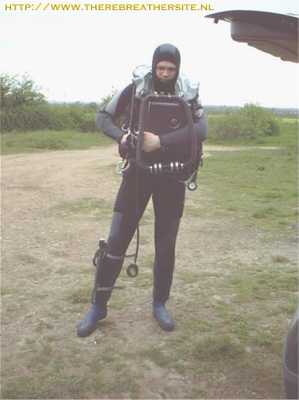
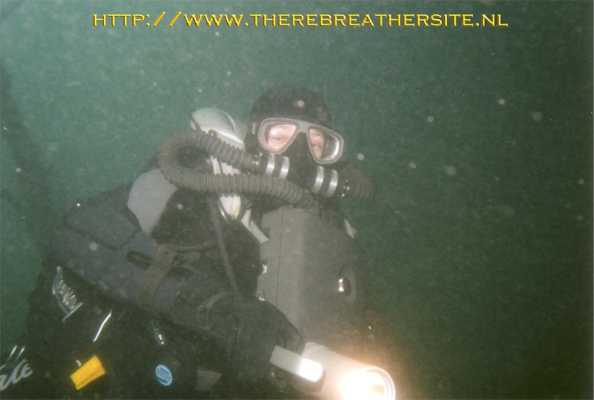
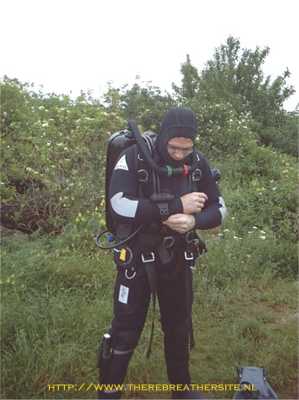
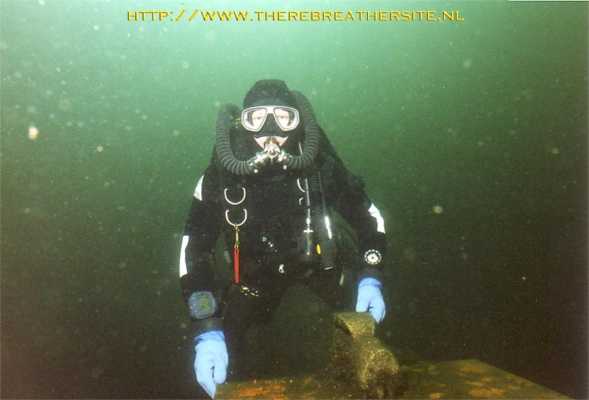
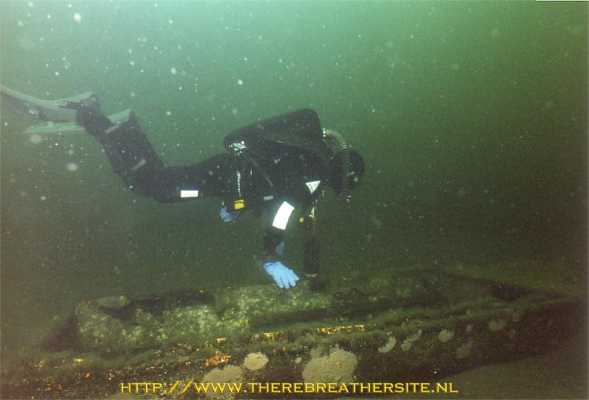
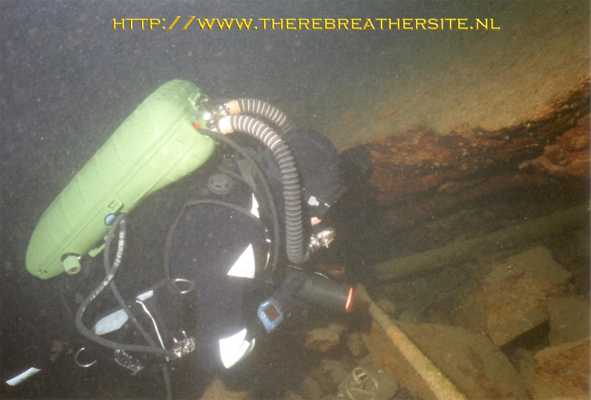
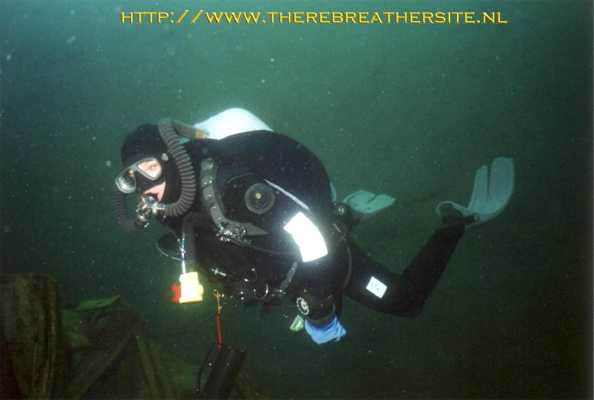
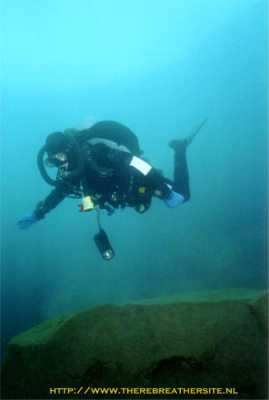
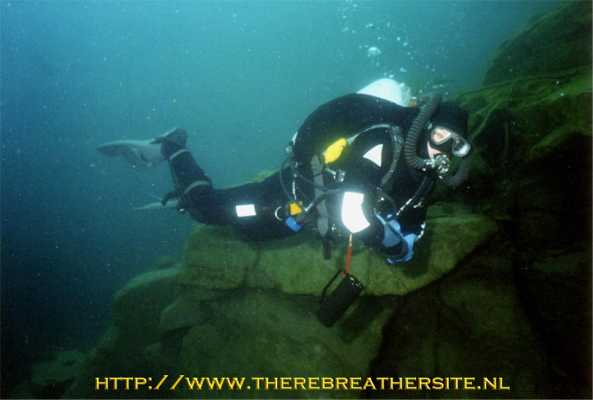
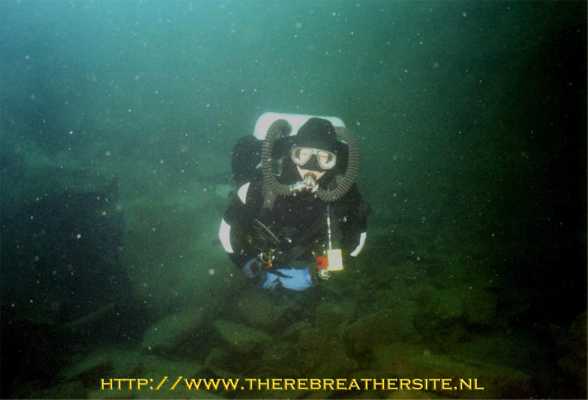
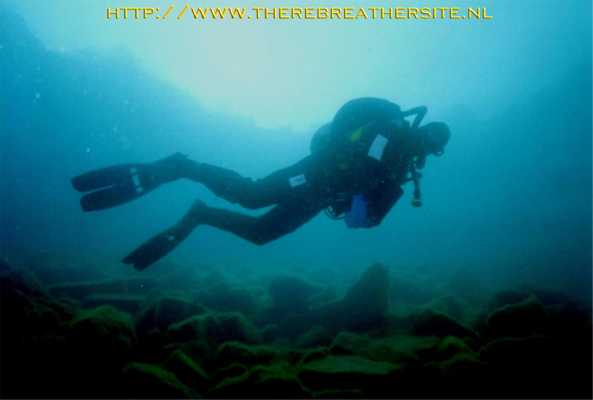
Lothar thank for contributing to this section of my website!

Therebreathersite was founded by Jan Willem Bech in 1999. After a diving career of many years, he decided to start technical diving in 1999. He immediately noticed that at that time there was almost no website that contained the history of closed breathing systems. The start for the website led to a huge collection that offered about 1,300 pages of information until 2019. In 2019, a fresh start was made with the website now freely available online for everyone. Therebreathersite is a source of information for divers, researchers, technicians and students. I hope you enjoy browsing the content!
